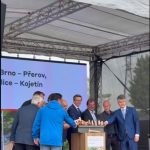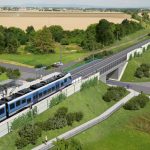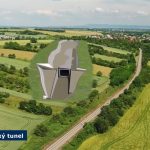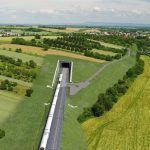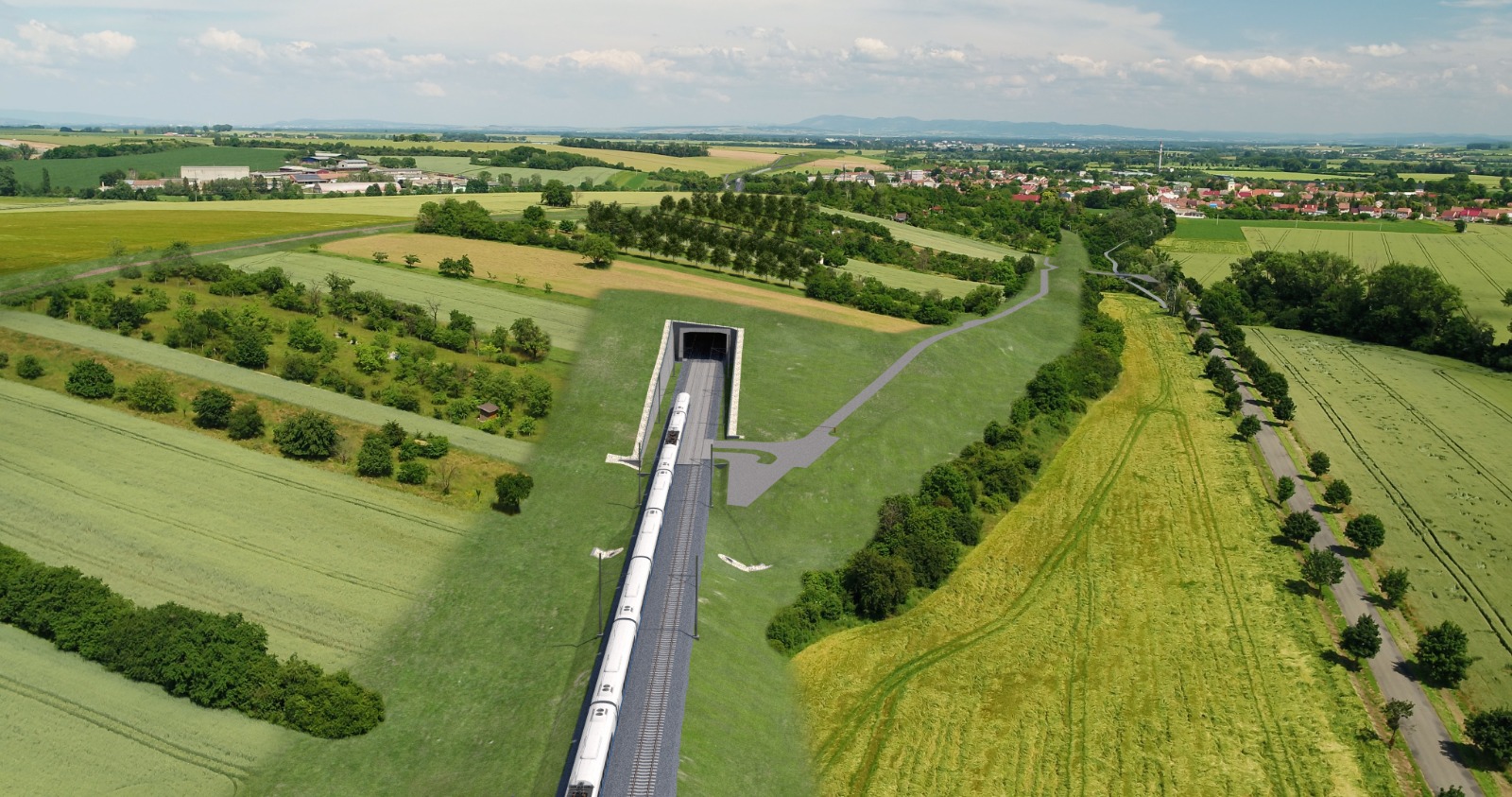
The Czech rail infrastructure manager, Správa železnic (SZ), has launched the modernisation of the Brno – Přerov railway, which is set to become part of the country’s high-speed rail network which will be further integrated into the EU high-speed rail system. Along the modernised and upgraded line, trains will be able to run at speeds of up to 200 km/h, double the current maximum.
Works commenced in Nezamyslice, in the Olomouc Region, with the complete reconstruction and double-tracking of the first 10-kilometre section from Nezamyslice to Kojetín. This includes the removal of all level crossings, which will be replaced by grade-separated crossings. The works are scheduled for completion by the end of 2028.
“We are witnessing a historic moment, as we are effectively beginning construction of the first section of high-speed rail links. The modernised line between Brno and Přerov will connect at both ends to the planned high-speed routes, which will offer unrivalled travel times across the entire country,” said Minister of Transport Martin Kupka.
The project involves the installation of ETCS, modernisation of the existing line, and construction of the second track. To enable the increased speed, several realignments will be built. On one such section, beneath Kozlov Hill, construction workers will build the 744-metre-long Němčice Tunnel. In total, eight new bridges will be constructed, the longest spanning the Žlebůvka stream valley, measuring 122 metres.
“Thanks to the doubling of the track, trains will no longer have to wait at stations for oncoming services. From a safety perspective, the installation of the European Train Control System (ETCS) and the removal of level crossings in this section are essential. All of this will allow us to introduce speeds of 200 km/h, which will become increasingly common on the Czech rail network,” said Jiří Svoboda, Director General of Správa železnic.
Switching between tracks will be enabled by a new turnout located midway along the modernised section. The existing station in Němčice nad Hanou will be decommissioned and replaced by a new stop located closer to the town. As with Měrovice nad Hanou, passengers will benefit from step-free access and more convenient boarding. Both stops will include car parking spaces and bicycle stands.
Along the line near surrounding villages, noise barriers totalling nearly 2.3 km in length will be installed. These will include sound-absorbing elements made from recycled rubber, and transparent panels made of toughened glass or plexiglass will be fitted on bridges.
As part of the project, the transition point between the alternating and direct current traction systems will also be moved from Nezamyslice closer to Přerov. Additionally, two new technical buildings will be constructed – one near the Němčice Tunnel, and another near the Hruška turnout.
The contractors for the project are Strabag Rail, Eurovia CZ, and Porr. The total investment amounts to CZK 7.8 billion (approximately EUR 310 million). Preparatory works are already underway, including archaeological surveys and tree felling in areas designated for realignments.
The implementation of Section 4: Nezamyslice–Kojetín of the Modernisation of the Brno–Přerov Line is proposed for co-financing by the European Union through the Connecting Europe Facility (CEF). The installation of the ETCS system is likewise co-financed under the ERTMS project through the same instrument. National funding will be provided by the State Fund for Transport Infrastructure.
Under the 2015 CEF Transport call for proposals, Czechia secured EUR 19.2 million in co-financing for preparatory studies necessary for upgrading and double-tracking the line.
The modernisation of this vital railway link between southern and central Moravia is divided into five separate sections. Later this year, Správa železnic will also begin the reconstruction of the Kojetín–Přerov section, which is likewise scheduled for completion by the end of 2028. By that time, three further construction projects between Brno and Nezamyslice will also be underway, financed through a Public-Private Partnership (PPP) model using private capital.
Share on:



